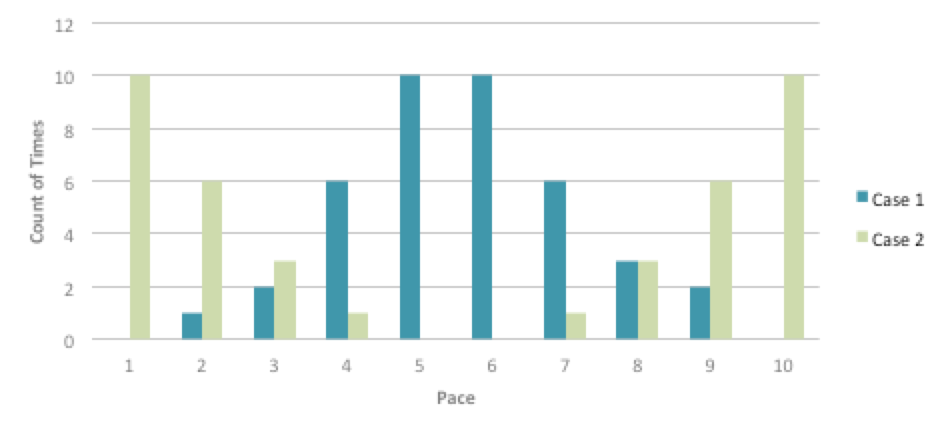Living Slower: Increasing Variance
As I try to live slower this year I’m also faced with increasing pressure to get more done at work & at home.
At first I thought these were opposing forces, but as I’ve been contemplating on it I no longer believe that has to be the case.
When we talk about pace we often think about the mean (average). The thing that doesn’t take into account is variance – the spread between the data points that make up that average.
Variance
Here is a great illustration of variance that shows two cases – each with the same total & same mean. The one that is more spread out in its distribution has more variance.
For me, life started to feel a bit like that dark green cluster – always moving at a similar pace. Low variance.
At work I have a lot to get done, then I come home and have a lot to get done and when I find some free time, knowing it was limited, I’d try to do a bunch of things I really wanted to do. After doing that for long enough you start to slow down & get worn out. Your fastest pace is no longer as fast and since you always feel behind your slowest pace can never be as slow.
I’m now considering how I can in fact move my mean pace down while still getting a lot more done. I believe I can do this by leveraging variance.
What that means is less time at the average and more time at the extremes. Like case 2 below.
To me that means working hard until I am no longer effective and then resting.
The trick for me is forcing those low paces. A lot of things I like to do for fun actually feel like work. Most of it is on the computer. (Writing this is no exception.)
Ironman Training & Variance
This isn’t a foreign concept to me. It is actually exactly how I trained for my Ironman last year. If you haven’t trained for a race ever you might think you do it by going out and running a bit every day as fast as you can handle. In fact, the best practice, and the training plan I followed, called for the opposite.
On half of the days I would do short workouts where I would go really fast and push myself. The other half of the days I would take as a rest day, going slower for a bit longer of a distance to let my body recover.
This variance in training produced great results. It helped me mentally because as tough as things were on the hard days, I knew they would be over soon and a rest day would be up next. It also helped prevent physical burnout.
Living Slowly Through Variance
As I think about things that I consider rest today there are a whole lot that aren’t actually that restful.
Some things I would classify as a 3 or 4 on a pace scale. Reading things online often falls into that category for me. I feel a need to pay attention to everything and to research things I don’t know much about and then after an hour of it I feel more exhausted than when I started but didn’t really accomplish anything.
I’ve even vacationed so hard before that I came back exhausted – I was supposed to be taking a break and was cranking a 6 or 7 the whole time.
Then there are the things that feel productive but that aren’t really.
A few items that might be a 5 or 6 include sending emails & large meetings. They seem like they should be counted as work time, but often aren’t really moving anything forward.
Then there are the countless hours people waste at work logging time in the office because most managers are still not able to quantify productivity, so they default to measuring time-in-seat.
Living with variance is looking for more 1s and 10s.
10s are those hours where you’re dialed in the zone: writing code, drafting documents, brainstorming like a boss, hammer-to-nails. Those time where you crank through items on your todo list. Specifically items on a well filtered and intentional todo list.
1s are those times where you feel yourself recharging: sleeping, reading a book, staring at a fire, laying on the grass outside.
So my goal is to drop the mean a bit but increase the throughput. Drop everything in the middle and replace it with real rest. Then add more high quality & fast paced productivity with some of the remaining energy.

I loved the ending of your article Greg.
“So my goal is to drop the mean a bit but increase the throughput. Drop everything in the middle and replace it with real rest. Then add more high quality & fast paced productivity with some of the remaining energy.”